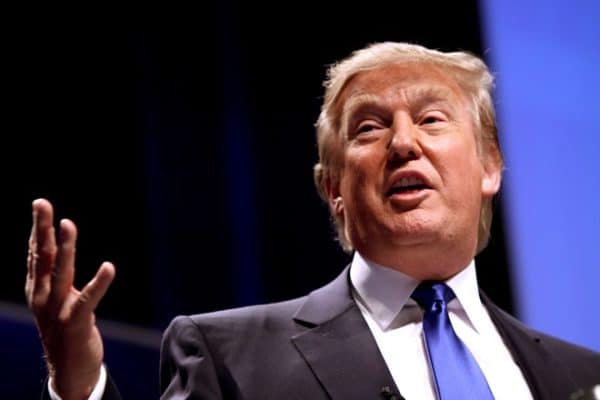
 Trump solar tariff: The United States has announced new tariffs on solar panel imports as an attempt to drive home President Donald Trump’s “America First” agenda.
Trump solar tariff: The United States has announced new tariffs on solar panel imports as an attempt to drive home President Donald Trump’s “America First” agenda.
The action which will see 30 per cent tariffs placed on solar panels and products from outside the US is said to be aimed at cutting off imports from manufacturing behemoth, China. But the fallout for the solar industry in other countries including Canada is still uncertain.
The new tariff was approved in response to findings by the US International Trade Commission (ITC) which concluded that domestic manufacturers were being negatively impacted by cheap imports, triggering a 30 per cent duty on imported solar cells and modules in the first year, followed by decreasing tariffs over ensuing years.
And while the action proposes to give a boost to local manufacturers, its critics say that such protectionist measures may temporarily save a few struggling local companies but that the extra consumer cost will likely result in heavy job losses due to industry slow-down.
“While tariffs in this case will not create adequate cell or module manufacturing to meet U.S. demand, or keep foreign-owned Suniva and SolarWorld afloat, they will create a crisis in a part of our economy that has been thriving, which will ultimately cost tens of thousands of hard-working, blue-collar Americans their jobs,” says Abigail Ross Hopper, president of the Solar Energy Industries Association (SEIA) in the US.
The Trump Solar Tariff Could Actually Help…
In Canada, the news is still reverberating throughout the industry but some say that despite any setback the US tariffs may produce, at least the way forward is now a bit clearer. “This has been a cloud that’s been hanging over the US industry for the last six or eight months,” says Richard Sung, owner of Toronto-based Boreal Solar, to Cantech Letter. “It’s created irrational behaviour, like people stockpiling panels and pricing going through the roof.”
“On the one hand, it’s not good since now there are extra taxes being put on solar but on the other hand people can actually make some plans on the manufacturing side, like whether they’re going to manufacture in the US or whether they’re going to import and take the tariff costs,” Sung says. “I think that’s a good thing.”
The US tariff isn’t the first in the industry, as the European Union tacked on a similar 30 per cent import duty on Chinese solar products back in 2013. Canada, too, has its protectionist measures in place for the renewable energy sector. Domestic content requirements force companies to source equipment from local suppliers and, in 2015, after concluding that China had been dumping cheap, subsidized modules onto the Canadian market, the Canada Border Services Agency issued new tariffs on Chinese solar panel imports, with duties ranging from nine to a whopping 286 per cent.
Along with driving up the cost of renewable energy, some say that the tariff approach doesn’t really work.
Sung says the 2015 tariffs haven’t helped create a stronger solar industry at home. “It turns out that if you don’t manufacture in China, you just manufacture in Southeast Asia or you manufacture in Poland, and so on,” he says. “Those [tariffs] increased the costs of solar here but not dramatically.”
At the same time, it’s unclear whether Canada will even fall under the new US restrictions or possibly be exempt, as analysts say that some manufacturers may qualify for exclusions under the new regulations. A report from Goldman Sachs identifies Canada as one of the potential exceptions. “Two key exclusions with respect to technology and certain countries (Canada/Singapore, among others) were included as part of the initial recommendation,” says Goldman Sachs.
Leave a Reply
You must be logged in to post a comment.




 Share
Share Tweet
Tweet Share
Share




Comment